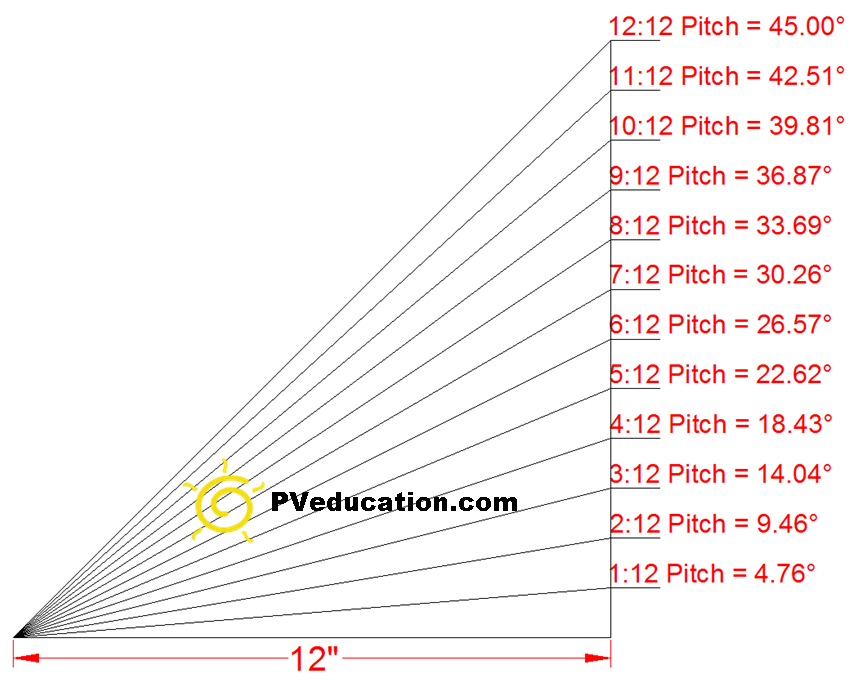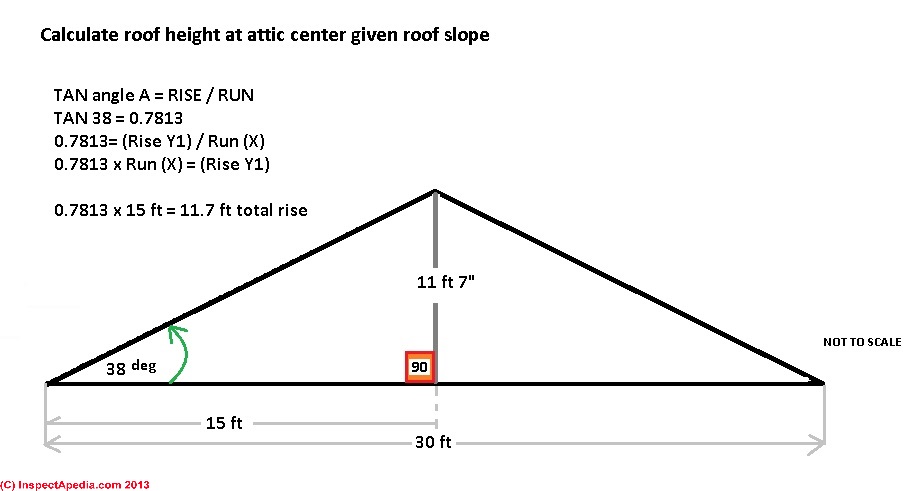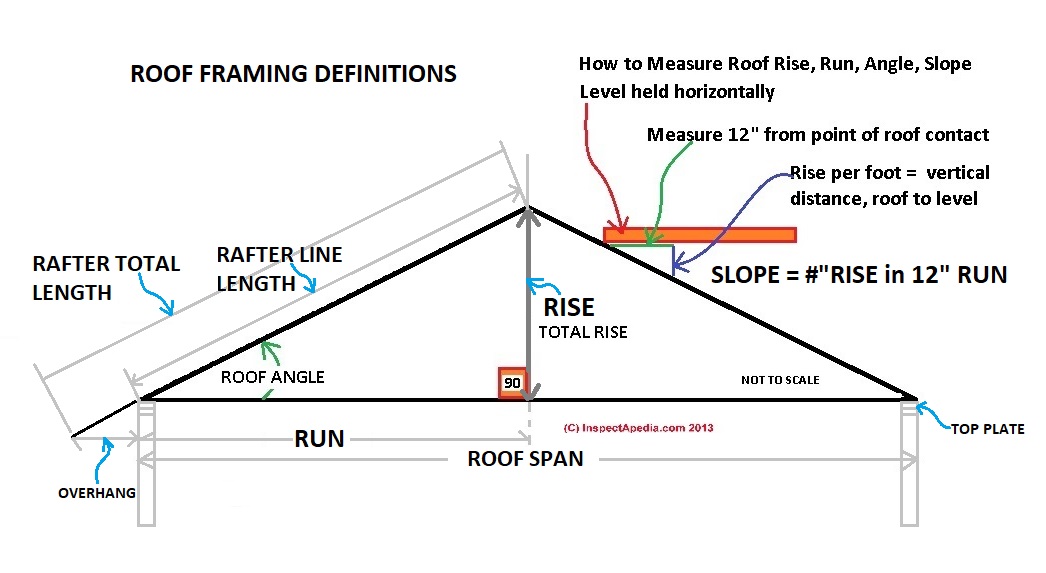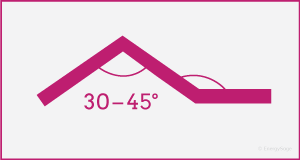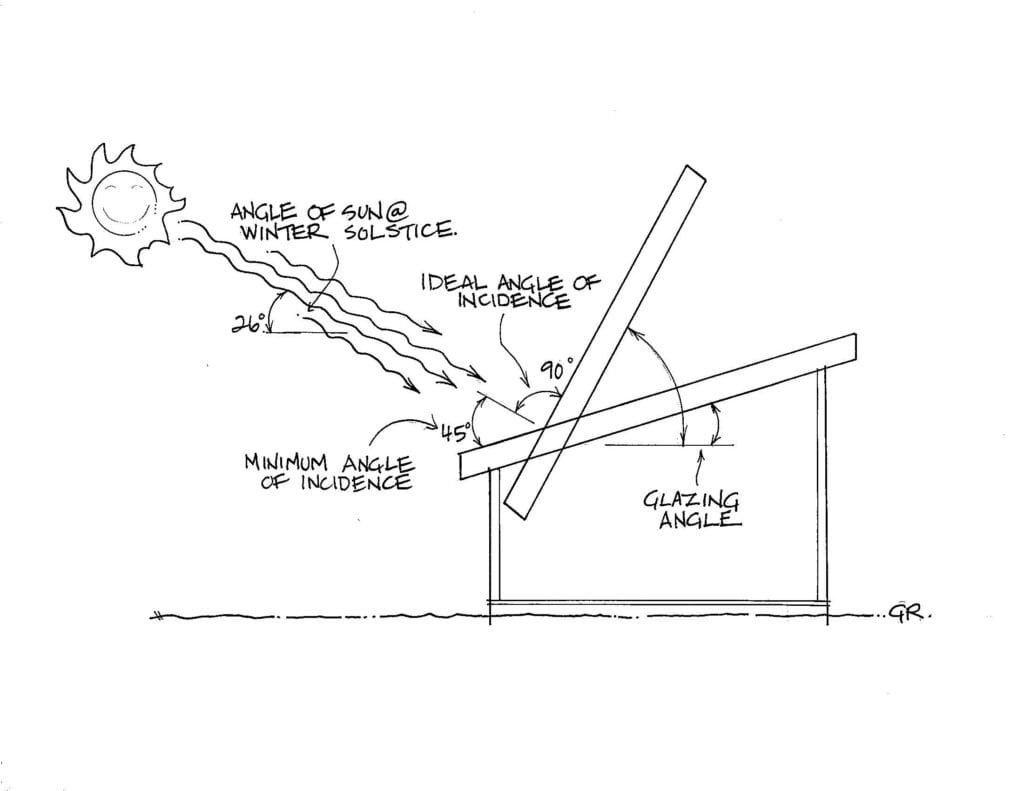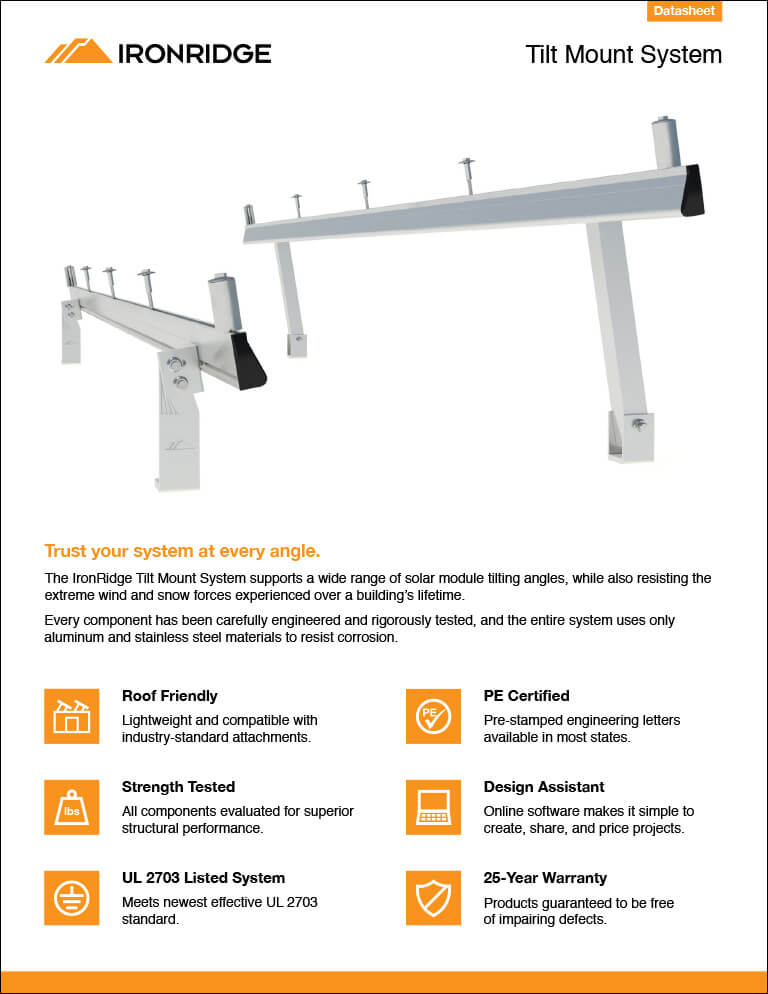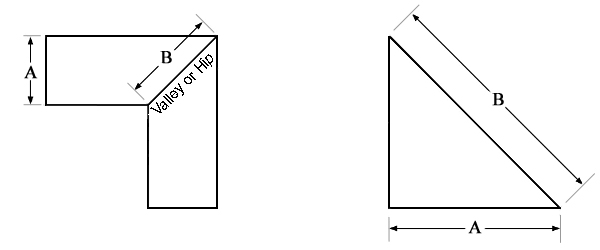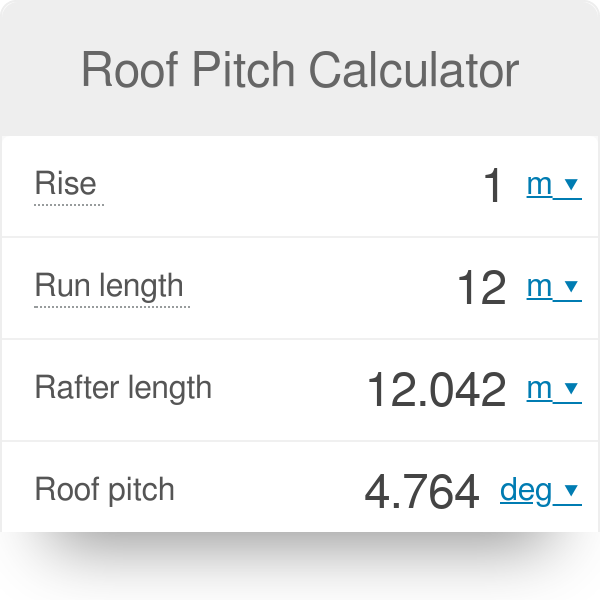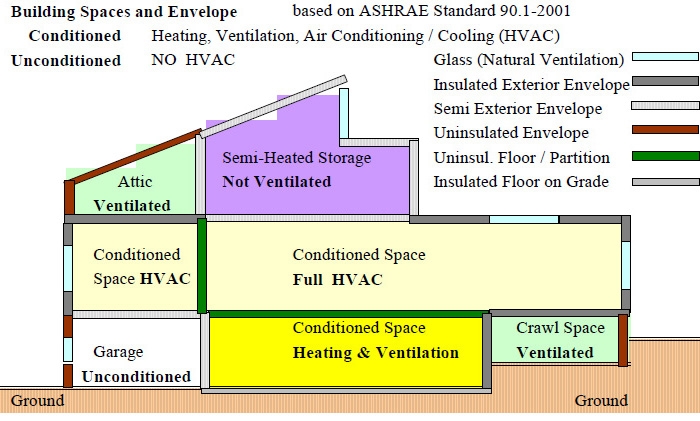On blue prints architects engineers usually display the pitch of a roof in the format shown on the image where number 4 represents a rise and number 12 represents a length.
Standard roof tilt angle.
So use the 12 inch level as a constant run and 18 inch ruler as a variable rise.
The picture below shows the pitch of a 7 12 roof slope meaning that for 12 of horizontal measurement roof run the vertical measurement roof rise is 7.
Roof pitch is used to describe the slope or angle of the roof.
Locate its tangent or tan and follow the left row for you to read its corresponding degree.
A 4 12 is a roof slope that rises by 4 inches for every 12 inches across.
This measurement is best done on a bare roof because curled up roofing shingles will impair your measurement.
The 12 inch run is considered standard in roof pitch or angle terminologies.
Find all the needed factors in order to determine the pitch angle s degree.
These are utilized in residential applications.
This means if a roof rises 4 in the length of 12 your roof pitch would be 4 12 or 18 43 degrees.
Roof pitches exceeding the level of 9 12 or approximately 37 degrees are termed steep slope roofs.
The most commonly used roof pitches fall in a range between 4 12 and 9 12.
Roof pitch or slope is a measure of vertical rise to horizontal run expressed in inches per foot.
In the roofing trade the go to term is pitch and it is expressed in terms of 12 inches so the pitch of a roof is determined by how many inches the slope rises for every 12 inches it runs horizontally.
If the solar system is being ground mounted or tilted up on a flat roof top the tilt angle is also used to determine the row spacing of the array so the front row.
Pitches lower than 4 12 have a slight angle and they are defined as low slope roofs.
Pitches of less than 2 12 are considered flat roofs even though they may be very slightly angled.
Roof pitch and corresponding angles.
Some of the most common roof pitch types are conventional slope type roofs designed with pitch ranging from 4 12 to 9 12.
At this level the solar panel can lie flat on the roof and get enough sunlight to produce enough electricity.
This forms an angle of 18 5 between the horizontal section and the roof and creates a gentle incline that is seen as a midpoint between a low pitch and medium pitch roof.
The tilt angle in degrees is used when determining the performance of a solar system.
The roof pitch is important in determining the appropriate installation method and how much roofing material will be needed.
The tilt angle of the solar array is taken into consideration when the system is being designed.
In case the roof is very steep you may not be able to get the most optimal tilt angle for the panel especially if it is lower than the angle of the roof.

